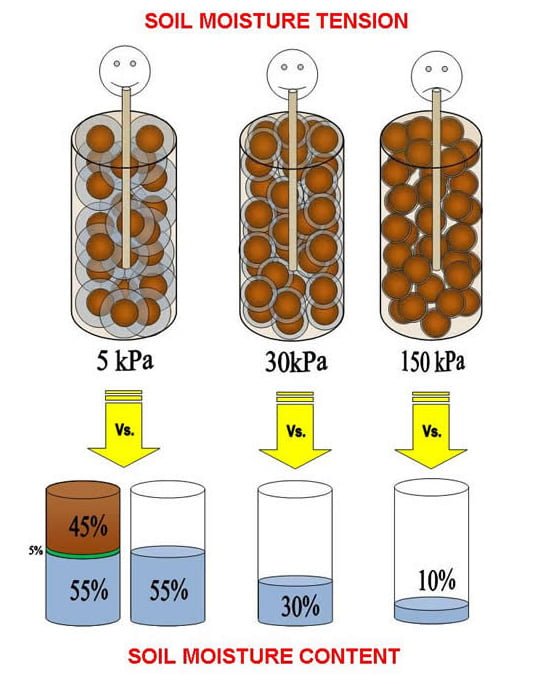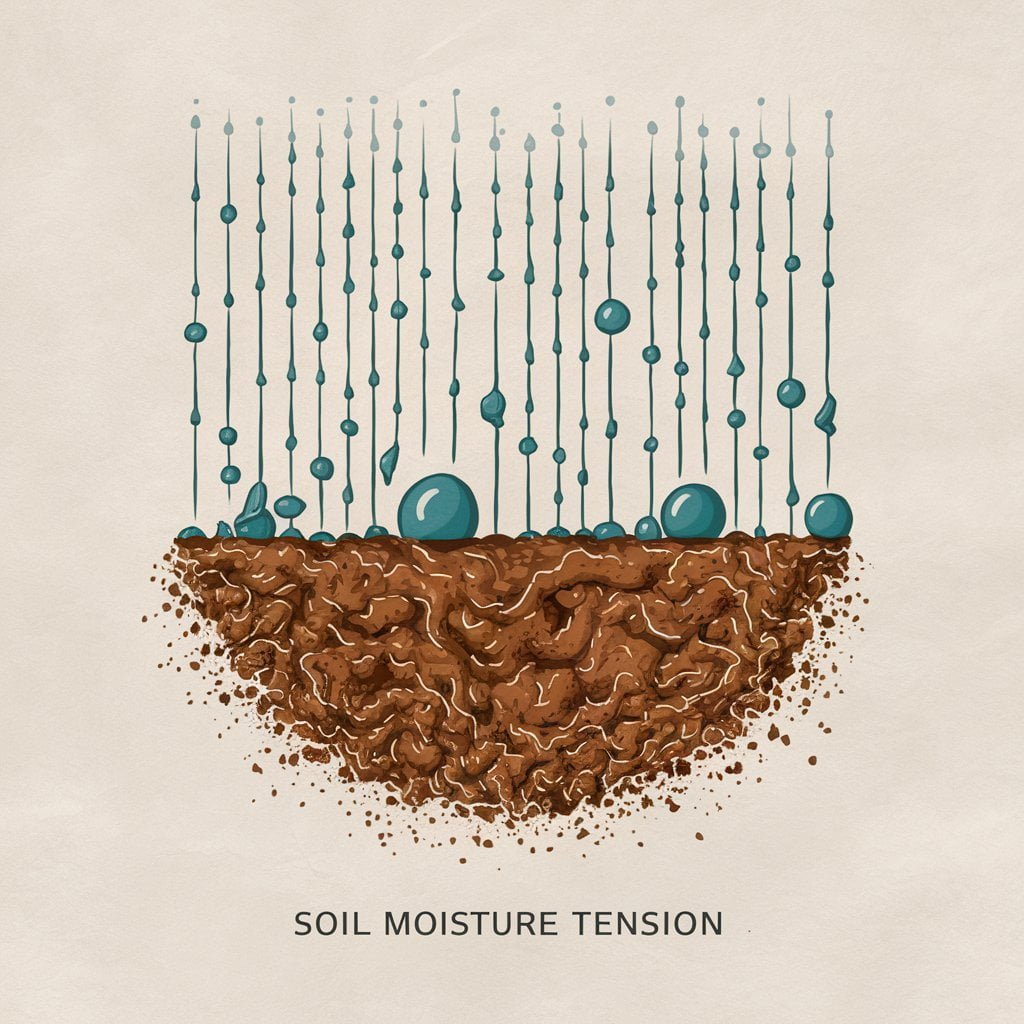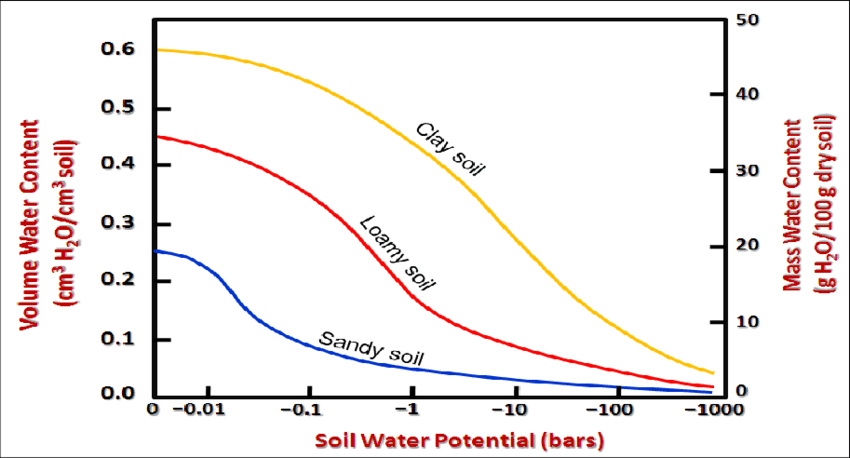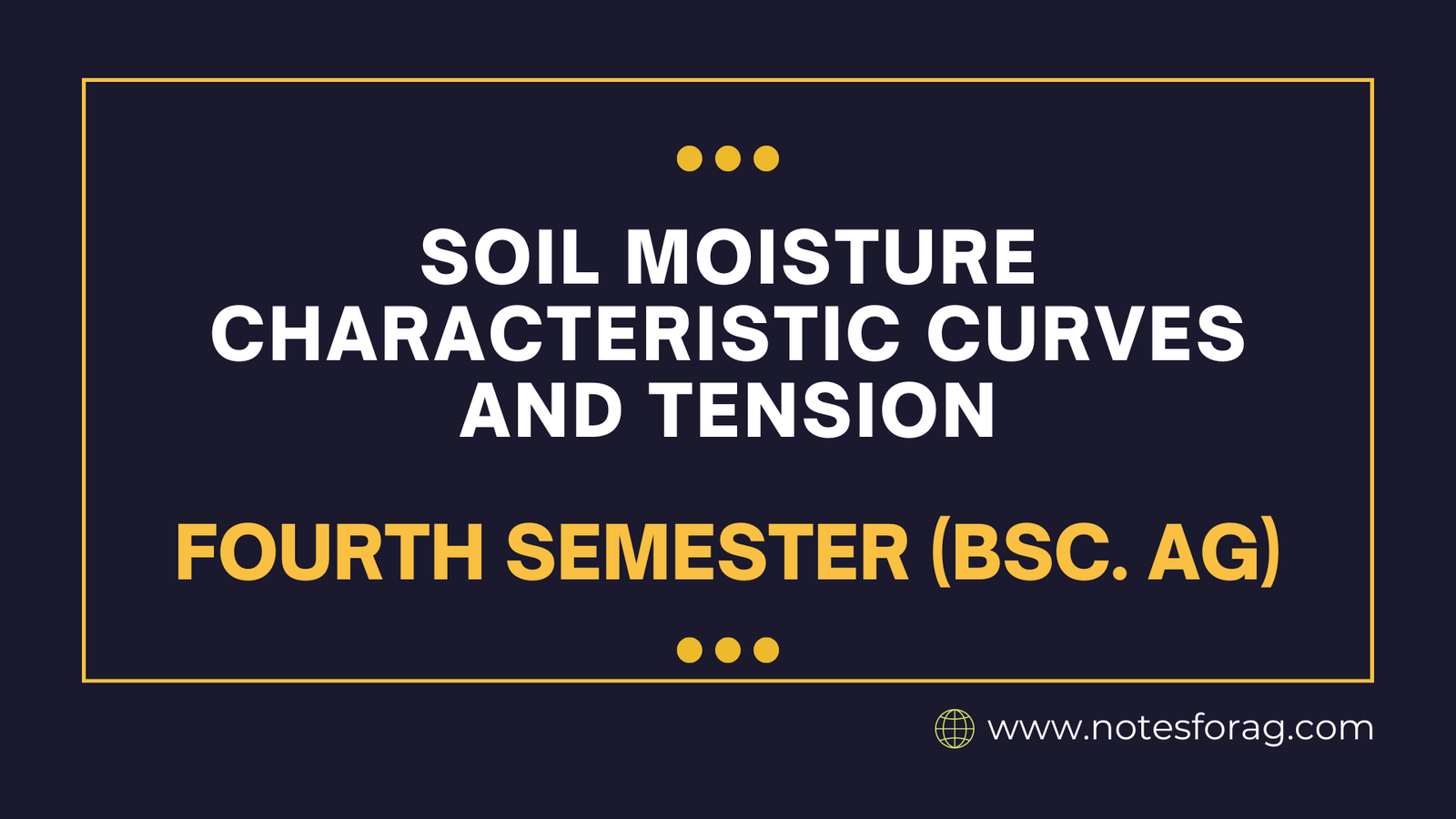Soil moisture characteristic curves (SMCCs) and soil moisture tension are basic ideas in soil science that help us understand how water travels through the soil and effects plant growth.
Table of Contents
Understanding the relationship between water content and the energy with which it’s held in soil is crucial in various fields like agriculture, hydrology, and geotechnical engineering. This is where soil moisture characteristic curves (SWCCs) and soil moisture tension come into play.
Soil Moisture Tension
This term refers to the energy required to extract water from the soil. It’s not a direct measurement of water content but reflects the difficulty plants or other processes have in accessing that water.

There are two main ways to express soil moisture tension:
- Positive Pressure: Measured in units like kPa (kilopascals) or bars. Higher values indicate greater energy needed to extract water (drier soil).
- Negative Pressure Head (Ψm): Often measured in centimeters (cm) of water. A more negative value suggests tighter water holding and higher tension (drier soil). The negative sign indicates that the pressure is lower than the atmospheric pressure.

Soil Moisture Characteristic Curve (SWCC)
An SWCC is a graphical representation of the relationship between volumetric water content (θv) and soil moisture tension (Ψm). It’s essentially a fingerprint for a specific soil type, reflecting its ability to hold and release water.

A typical SWCC has three main regions:
- Saturation Zone: At the wet end of the curve, the soil is saturated, and all pores are filled with water. The tension is very low (near 0 cm or 0 kPa), and even slight suction can easily remove water.
- Desorption Zone: As the tension builds (becomes more negative), water begins to drain from larger pores. Plants can still reach the majority of the leftover water rather easily.
- Retention Zone: At the dry end of the curve, tiny pores and dirt particles tightly hold water. The tension is quite strong (negative values increase), and significant energy is required for plant uptake or removal.
Benefits of SWCCs
- Predicting Plant Water Availability: Knowing the SWCC and moisture tension allows us to determine how much water is accessible to plants at any given time. This aids in optimizing irrigation operations.
- Understanding Soil Drainage: The SWCC helps predict how quickly water will drain from the soil, which is crucial for preventing waterlogging and ensuring proper aeration for plant roots.
- Modeling Soil Behavior: SWCCs are valuable tools for computer models that simulate water flow and solute transport in soil.
Measuring SWCCs
There are several methods for measuring SWCCs in a laboratory setting, including the use of pressure plates or membranes to adjust moisture tension and quantify the related water content.
By understanding soil moisture tension and SWCCs, we gain valuable insights into soil water dynamics, leading to better management practices for sustainable agriculture, efficient water use, and a deeper understanding of soil behavior in various environmental contexts.
Frequently Asked Questions (FAQs)
What is the soil moisture characteristic curve?
Similar to physical fingerprints, soil moisture release curves are specific to each kind of soil and are also known as soil-water characteristic curves or soil water retention curves.
What is the soil moisture tension?
It measures how strongly water is trapped in the soil. It is measured in units of pressure (centibars or kilopascals).
What is tension in soil moisture tensiometer?
A tensiometer is a device that measures soil water tension. It is made up of a one-inch-diameter cylindrical pipe with a porous ceramic cup on one end and a vacuum gauge on the other (see Figure 1 below).
Related Articles

